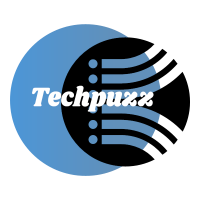Jaro Education Describes on How is remote learning transforming higher education?
Introduction
The Covid-19 epidemic has changed the fundamentals of higher education. Prior to the pandemic, there was broad recognition that the old higher education economic model was in significant jeopardy.
As all the stakeholders of modern education including the students, teachers, and policymakers assess the proposition of higher education through the lens of price and value, the pandemic has turned everything towards a new and slightly better direction in terms of comparing the conventional classroom vs the many forms of digital education.
Algorithm and Next-Generation Online Learning
In 2020, online learning became the norm, but most universities are still using primitive “remote learning” through live Zoom classrooms, a system that hasn’t changed much since video conferencing in the late 1990s. In the multibillion-dollar market for entirely online courses and degrees, however, a slew of new platforms and technologies based on cloud computing, massive databases, and artificial intelligence have arisen.
Student Support and Teaching Powered by AI and Analytics
Digital classrooms, video conferencing, educational toolkits, online skillset courses are all having a tremendous influence on the growth of students, services and support related to the same, all backed by the power of Artificial intelligence.
These services also enable the career services branches to navigate through important systematic data procured through their own institutions’ data and data collected through pattern recognition that in turn benefits students themselves by providing them with accurate admission, enrollment, and course deadlines, just as paid applications used to provide earlier. These methods are being use to digitize campus services through smart speakers in student dormitories, which are fundamental self-service technologies that make the higher education experience more customer-centric while also lowering costs.
In general, many colleges are making investments in predictive analytics, which enable by data created by online learning activities but often depends on outside consulting expertise and datasets.
Data-Driven, Education-Workforce Alignment, and Digital Credentialing
Some other important educational trends include the proliferation and rapid digitization of educational institutions aided by education technologies like the Jaro Education that is transforming the way educational records and answer sheets were stored, which was a messy, time and space consuming task-focused just on degrees and not the progress, to a much economical and environmental way, i.e. storing online which not only keeps the records safe but also marks the progress of each individual, the achievements, skills and even competency throughout and at the end of the course.
All the recruitment industries, career services, employers, and HRs are hailing this transformation and terming it as “unbundling of degrees” into shorter-form-micro-credentials that can therefore pave way for a curriculum that can account for the lifetime of growth and achievements with the help of collaboration with Extension Schools, Universities, Community Colleges, etc.
Many prestigious business schools and extension programs have welcomed this trend and the potential income streams that new sorts of digital credentials imply.
It’s past time for higher education to make digital strategy a top priority.
As a result of these technological advancements, college leaders and politicians must make digital transformation and technology a far higher strategic priority, particularly when it comes to their main businesses: learning and credentialing. The accumulation of significant intellectual property and market dominance in a few large education technology businesses makes creating solid partnership models with outside enterprises all the more important. Many leading institutions, for example, have committed to multi-million-dollar contracts and collaborative ventures with education online program managers (OPMs).
Conclusion
Finally, the emergence of technology-driven college alternatives and degree replacements implies that consumers and employers will have a lot more choices to choose from. This will need new digital learning infrastructure and standards, as well as legislation that prioritizes quality assurance while simultaneously encouraging innovation.
Robust and dynamic legislation for this purpose needs to be enacted as there’s a lot that can go wrong on the internet like the notorious tag of “Jaro Education Fake” that caused an unnecessary ruckus.
Institutional, student, and employer habits are all evolving at the same time throughout this digital learning transition, making this a key moment for reviewing results and business justifications, as well as rethinking strategies and policies through a new perspective.




